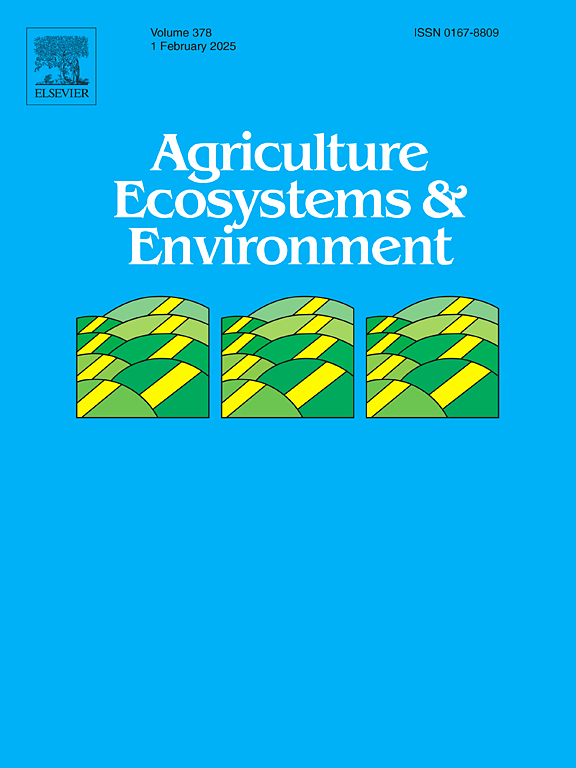Effects of grazing on temperate grassland ecosystems: A meta-analysis
IF 6
1区 农林科学
Q1 AGRICULTURE, MULTIDISCIPLINARY
引用次数: 0
Abstract
With growing recognition of the ecological importance of grasslands, efforts to prevent their degradation, enhance the soil quality, and maintain ecological balance have become central to temperate grassland management. However, many temperate grasslands experience varying intensities and modes of grazing. Effective grazing management is crucial to avoid damage and promote the sustainable development of temperate grasslands. This study adopts a variety of research methods. Firstly, through the collection and sorting of data, it is clear that the research content mainly focuses on more than 70 response variables. Secondly, the comprehensive effects of different grazing intensity, grazing mode, and grazing history on these response variables were studied, and then detailed studies were conducted to analyze the effects of different grazing intensity and grazing mode under different temperate grassland types on these response variables. According to the analysis of the comprehensive effects and effects of different temperate grassland types, significant heterogeneity was found in 13 response variables (H, R, E, Height, Coverage, Density, TB, PB-PF, SWC, TK, OK, and N(20–60 cm)). Finally, in order to study the source of heterogeneity of these 13 response variables, subgroup analysis was carried out to analyze whether it was caused by environmental factors (MAP, MAT, MAP ×MAT), and then publication bias test and Egger's test were carried out to prove the reliability of the research results. The results showed that the heterogeneity of 12 response variables (R, H, E, height, coverage, density, TB, PB, PF, SWC, OK and N(20–60 cm)) was attributed to environmental factors. However, due to insufficient data after subgroup analysis, the heterogeneity of TK cannot be determined.
求助全文
约1分钟内获得全文
求助全文
来源期刊

Agriculture, Ecosystems & Environment
环境科学-环境科学
CiteScore
11.70
自引率
9.10%
发文量
392
审稿时长
26 days
期刊介绍:
Agriculture, Ecosystems and Environment publishes scientific articles dealing with the interface between agroecosystems and the natural environment, specifically how agriculture influences the environment and how changes in that environment impact agroecosystems. Preference is given to papers from experimental and observational research at the field, system or landscape level, from studies that enhance our understanding of processes using data-based biophysical modelling, and papers that bridge scientific disciplines and integrate knowledge. All papers should be placed in an international or wide comparative context.
 求助内容:
求助内容: 应助结果提醒方式:
应助结果提醒方式:


